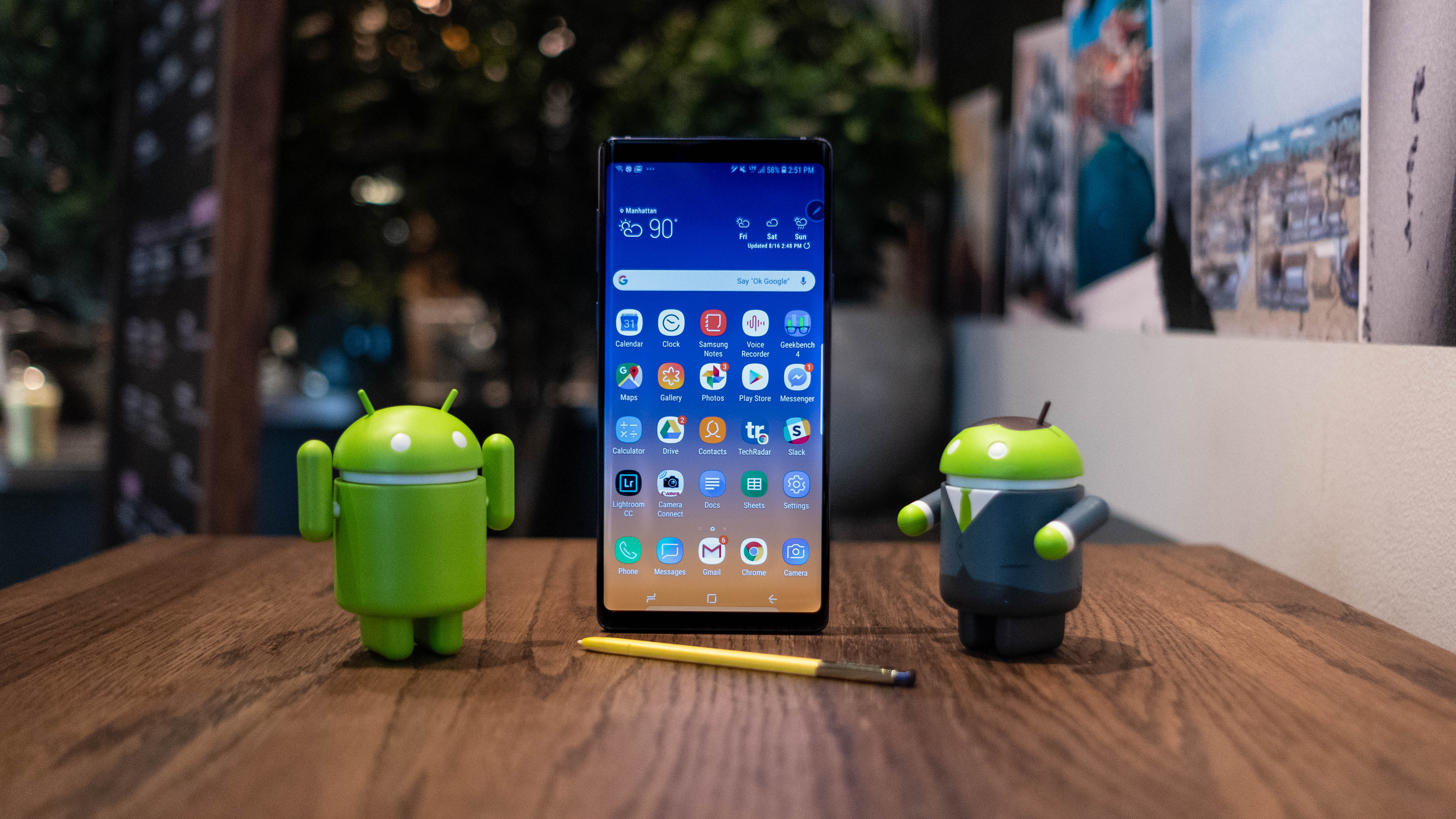Why you can trust TechRadar
Design and display
- Expansive, bright 6.4-inch display with minor dimension changes
- Includes fingerprint sensor, microSD slot and headphone jack
- Better-aligned rear fingerprint sensor could be bigger and the Bixby button should be smaller (read: eliminated)
Samsung’s Super AMOLED display doesn’t need to change much to look really great. It's consistently the best smartphone screen in the world until the next Samsung phone launches – every year.

The 6.4-inch Note 9 screen has grown by a tenth of an inch over the 6.3-inch Note 8 display, although it’s a change few will notice without breaking out the measuring tape (which we used in our testing).
The nearly bezel-less Infinity Display is bright and punchy, and confirmed to be 27% brighter and with 32% more contrast ratio than the Note 8. And, even if the tall 18:9 aspect ratio (or in this case 18.5:9) is on just about every flagship phone in 2018, Samsung’s curved edges are unmatched.

The size of the Note 9 has changed from the Note 8, too, but maybe not how you think. It’s slightly wider, and slightly shorter, than the Note 8, with dimensions of 161.9 x 76.4 x 8.8mm (the Note 8 was 162.5 x 74.8 x 8.6mm).
The Note 9 fits into the pockets of regular jeans shorts just fine. Caution, hot pants wearers: shallow back pockets smaller than this 162.5mm-tall phone left it sticking out when we wore certain shorts. Cases make it bigger still, and it weighs a bit more than the Note 8: 201g vs 195g. This isn’t a small or light phone, but it's more comfortable to hold than the S9 Plus in some respects thanks to its boxy, less rounded-off design.
Here are two features Samsung gives you that you don’t get on the similarly priced iPhone X: a headphone jack and a microSD card slot for expandable storage.
The Note 9 is IP68 waterproof and dust-proof, and that resistance rating stays the same whether or not the S Pen is embedded. New to the Note 9 over the Note 8 are stereo speakers (just like on the S9 and S9 Plus).
Sign up for breaking news, reviews, opinion, top tech deals, and more.

Here’s something else you won’t get from Apple’s top phone: a fingerprint sensor that acts as an alternative to Samsung's iris scanner and Face Unlock. Even when combined, those two sensors don't work as well as Apple's Face ID, so the fingerprint sensor staying put is extra important for Samsung.
The fingerprint reader is on the back of the Note 9, and centrally located this time. The Note 8 had a sensor on back, too, but it was off-center, and led to lots of camera smudges. We hated it.
The good news is the fingerprint scanner on the Note 9 is easier to locate, and our forefinger landed on it nicely. But Samsung can do better. The landing area is too small, and still too close to the camera array (having a Note 9 case helps here too). We would have preferred a larger target area, like the Google Pixel 3 offers.

Specs and performance
- Same chipset as the S9 Plus, but an upgrade for Note 8 users
- Doesn't offer the top clock speed among smartphones
The Note 9 specs also include a chipset that's an upgrade over the Note 8, giving us what's at the heart of the S9 and S9 Plus: either the Qualcomm Snapdragon 845 (US and China) or Samsung Exynos 9810 (everywhere else). It's country-dependent, just like the colors, so you have no choice here.
Luckily, we found the chip fast for 3D games like Fortnite on Android and for muti-tasking. Geekbench software gave us a multi-core score of 8,875, whereas last year's phone clocked in at 6,524 – those numbers are for the Qualcomm chip.
There's a bigger performance jump in the UK and elsewhere, due to the Exynos 9810 chip. We got an average multi-core score of 9,051 and single-core score of 3,698. We haven't noticed any performance lag in the US, though.
That said, the OnePlus 6 gave us a multi-core score of 9,100, and the OnePlus 6T just came out to replace it. The Huawei Mate 20 Pro scored 9,792, while the iPhone X and iPhone XS reigns supreme, hitting over 10,000 in all of our tests.
Samsung doesn't have the fastest chip, and its rivals are catching up. But it's plenty fast, and keep in mind that we have the 6GB of RAM Note 9 – there may be a bit more to the 8GB version.
Current page: Design, display and performance
Prev Page Massive storage and battery Next Page Camera and software
